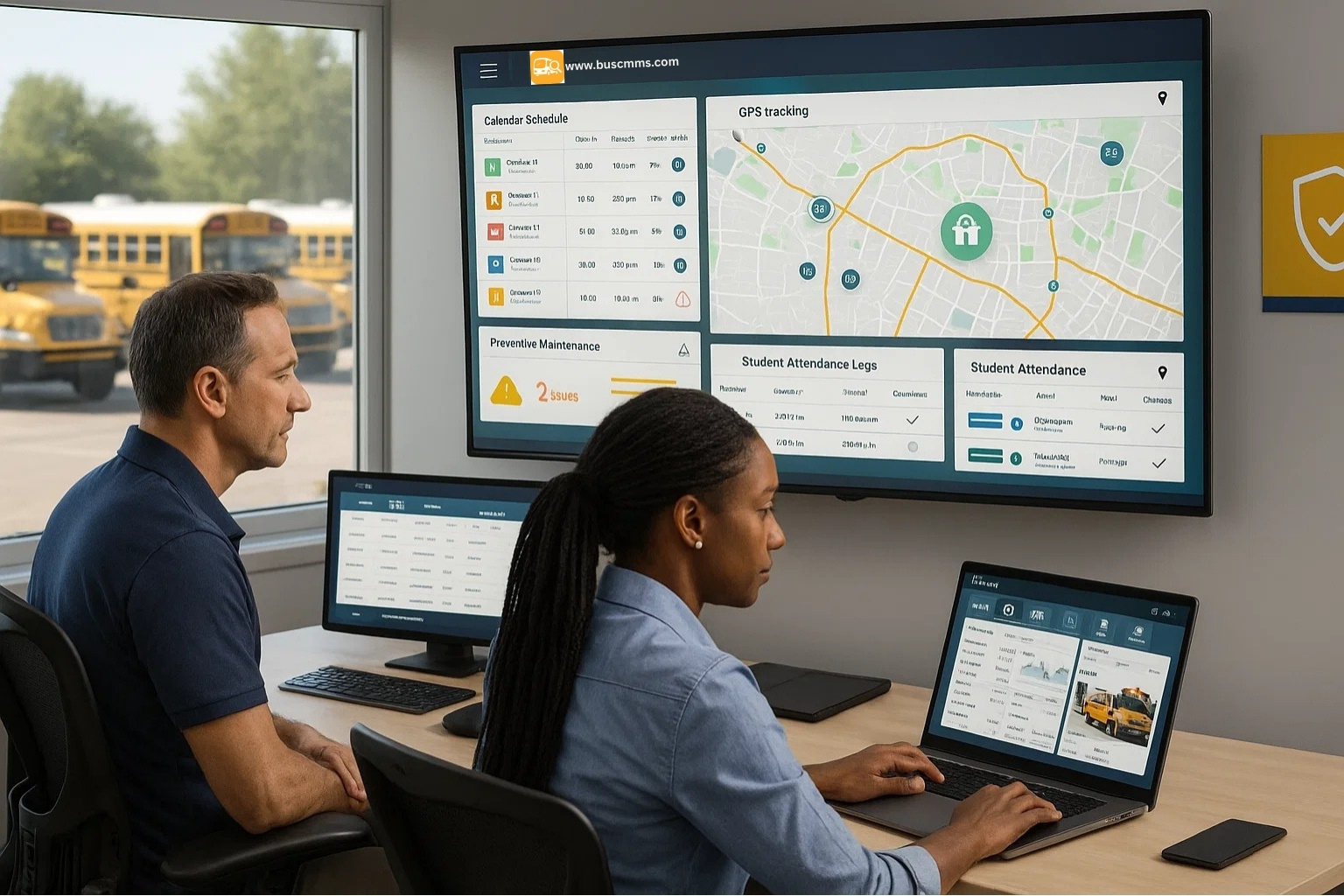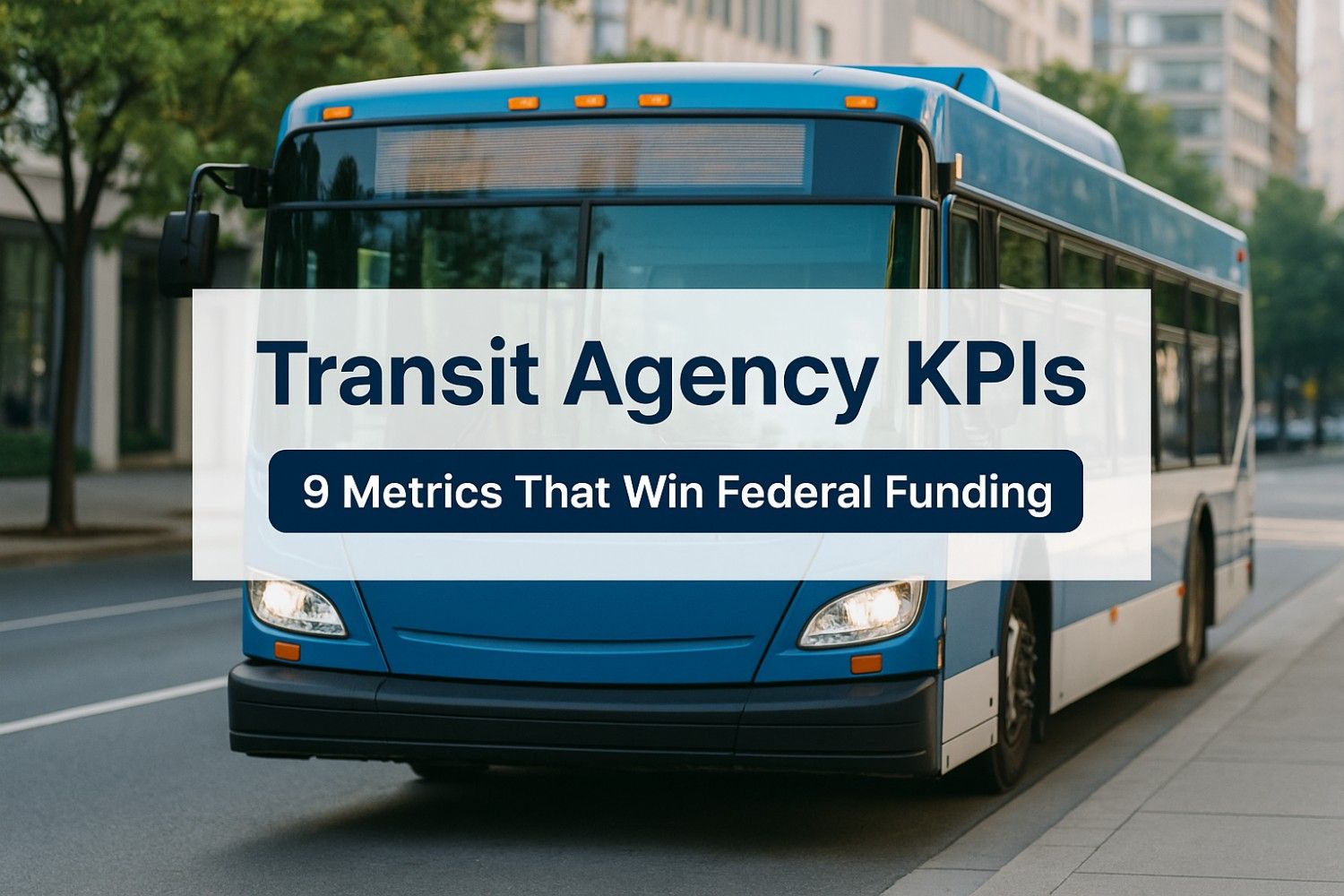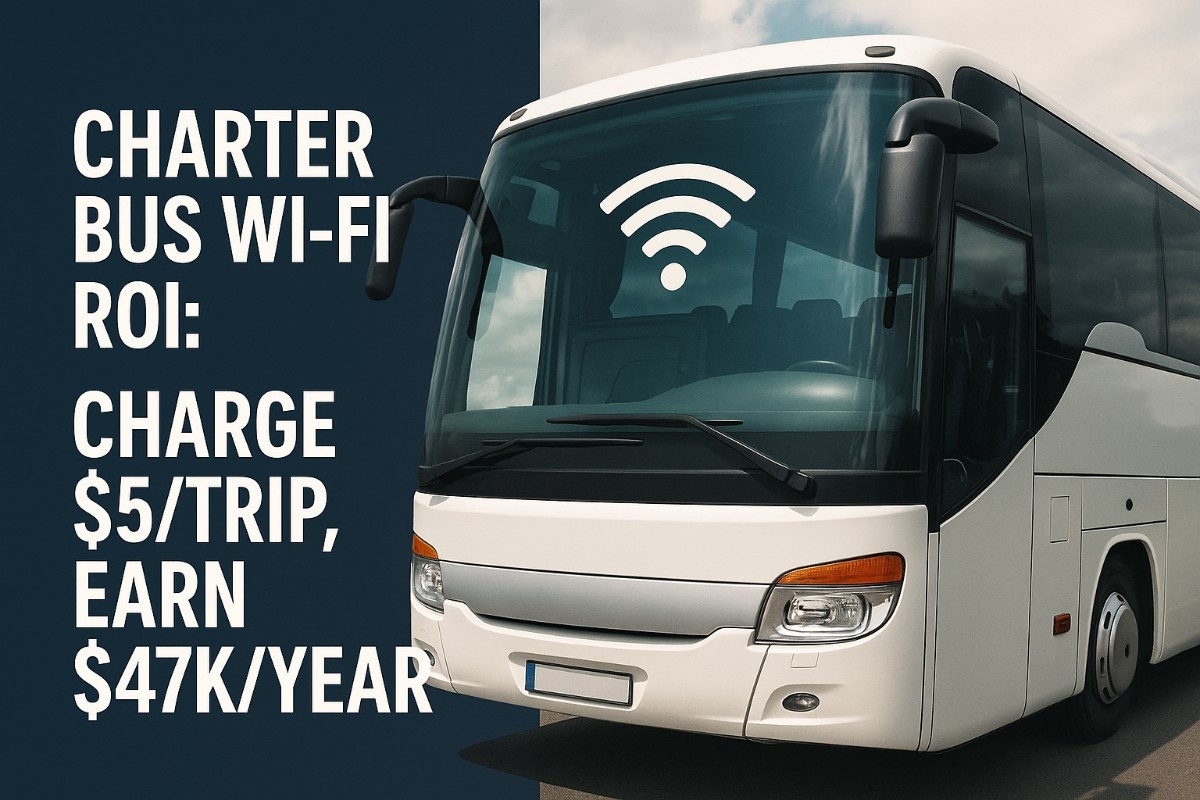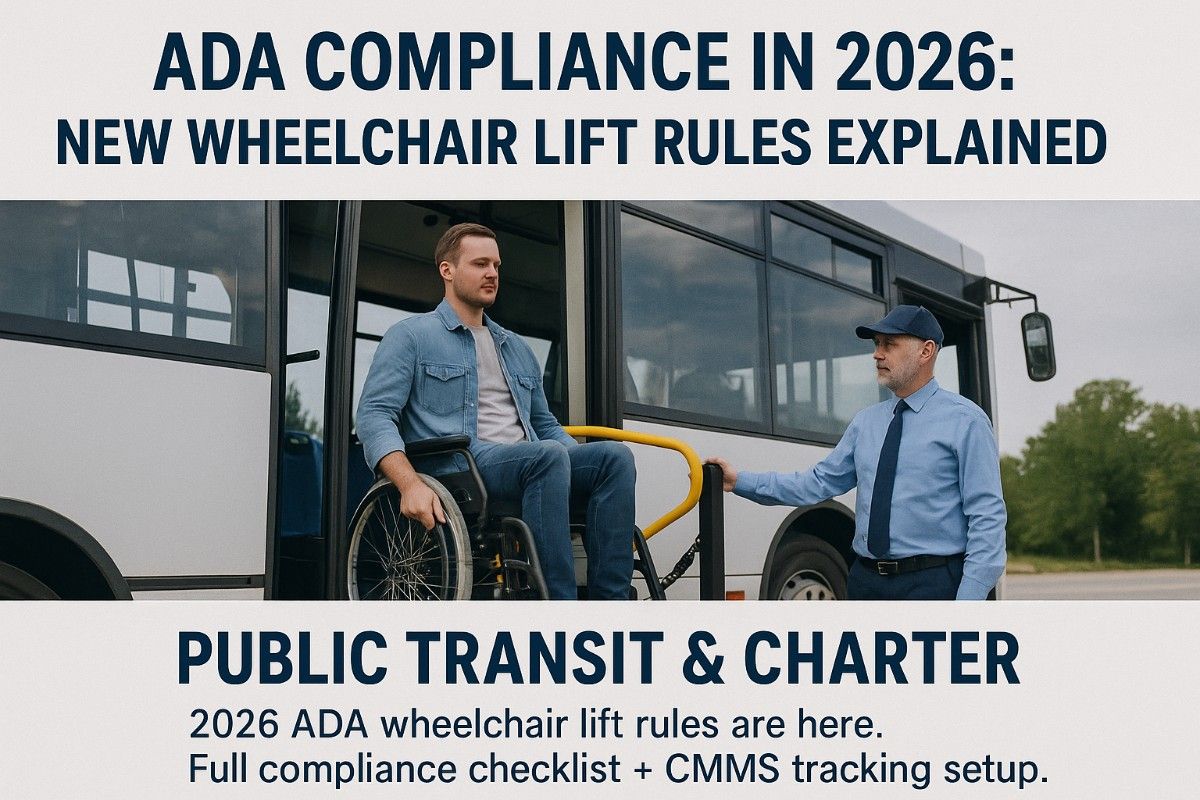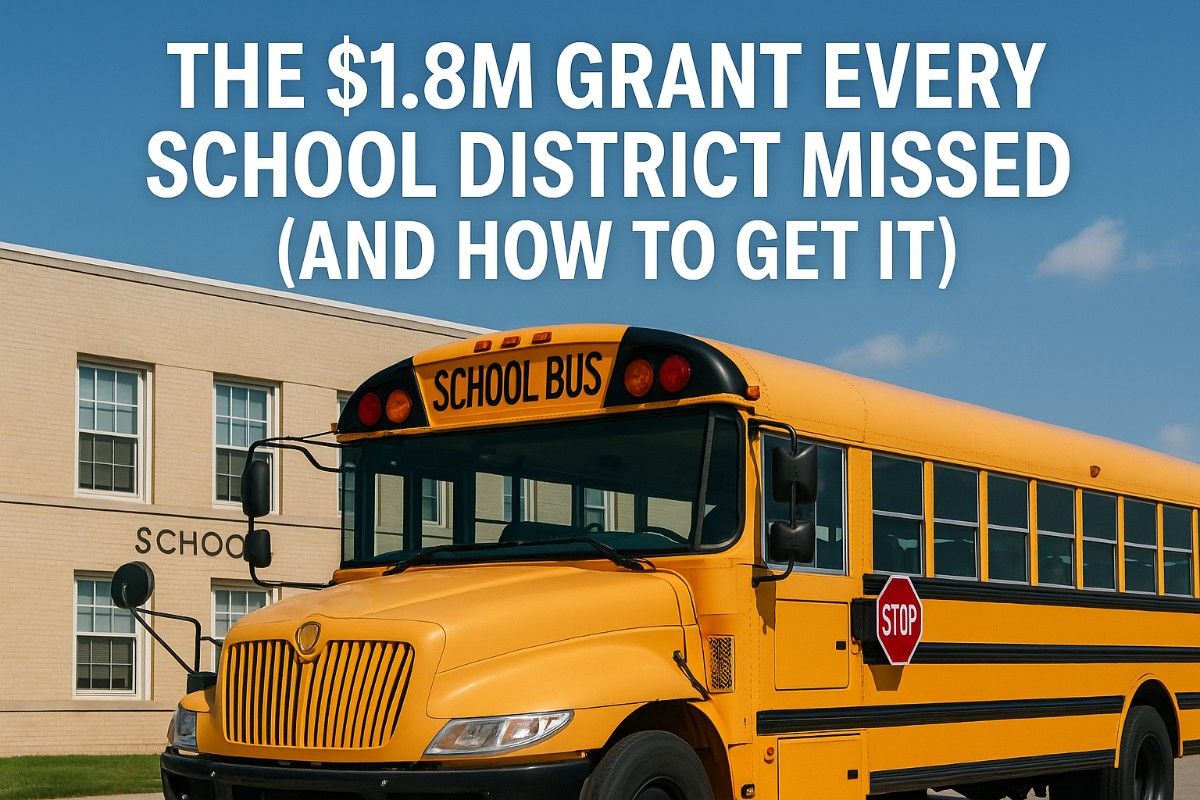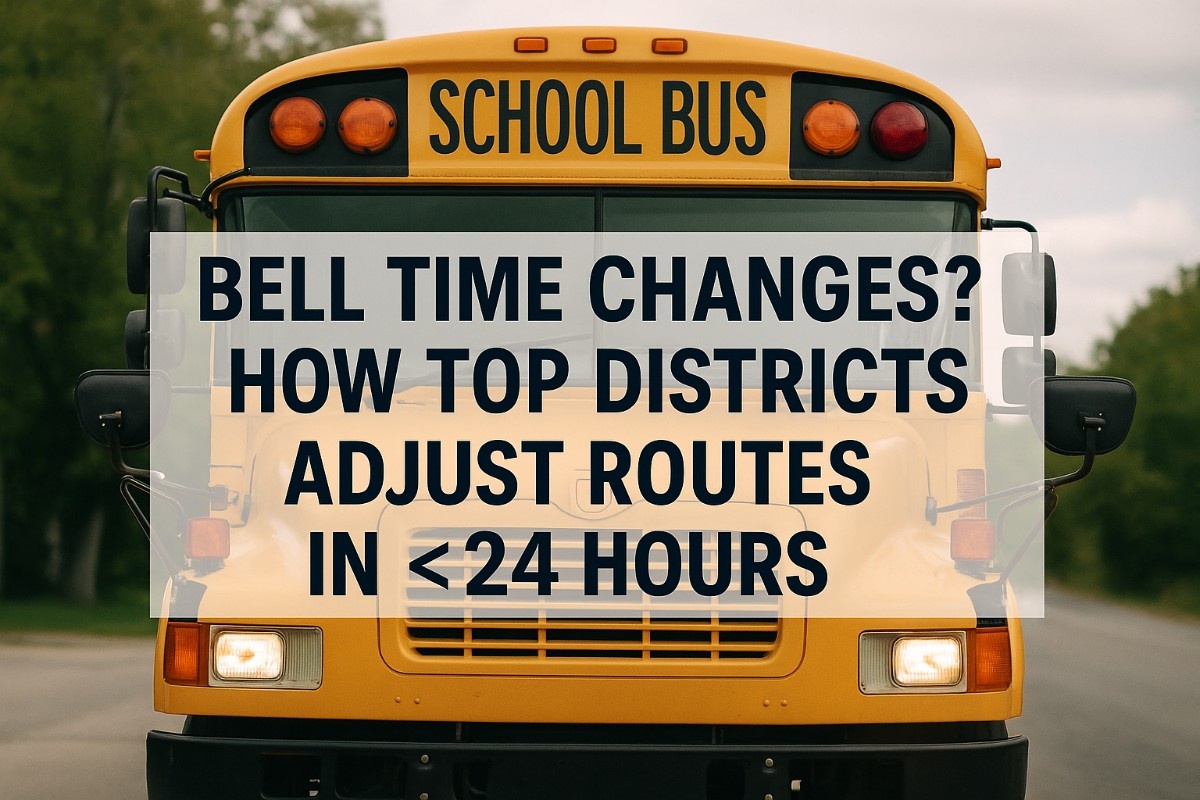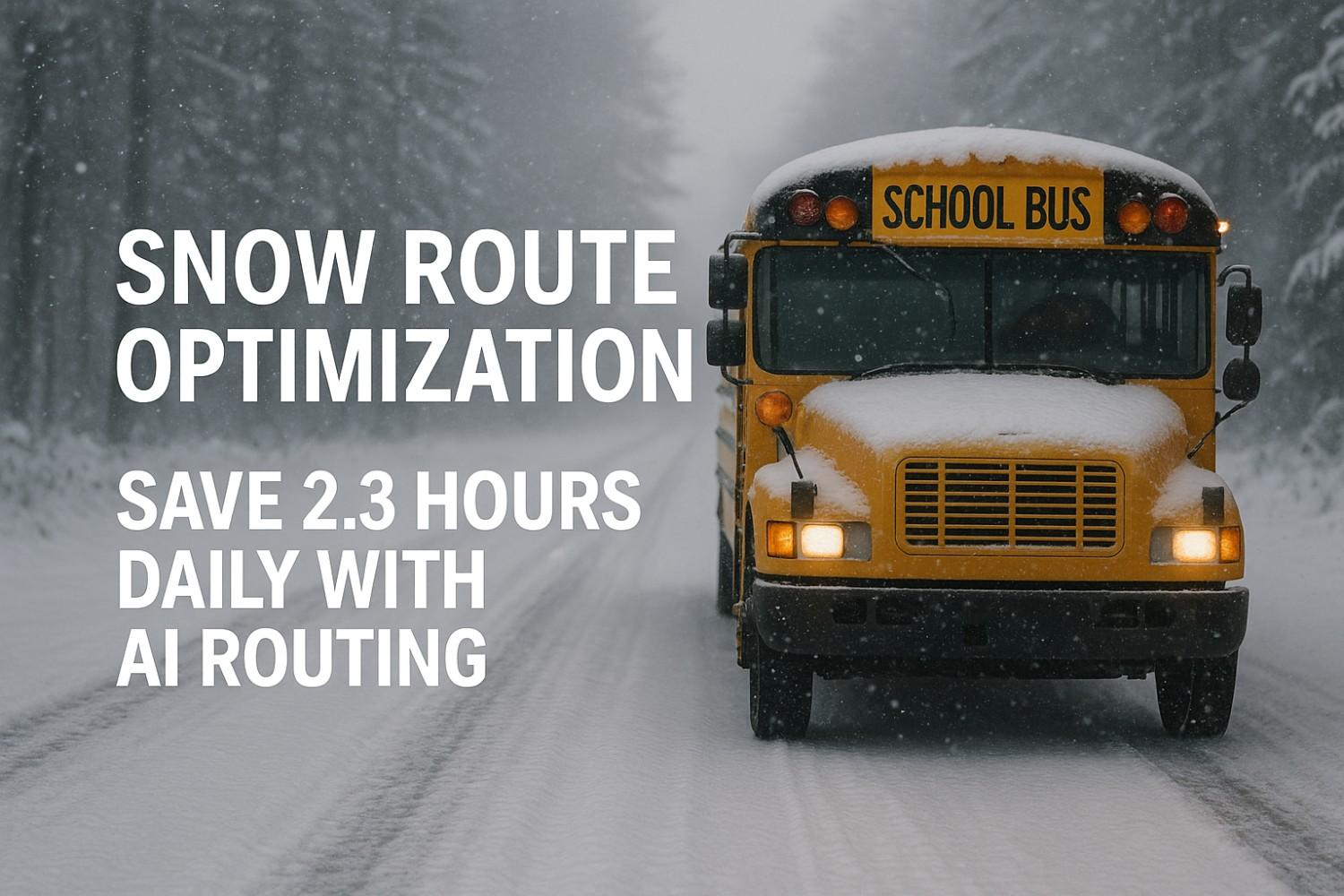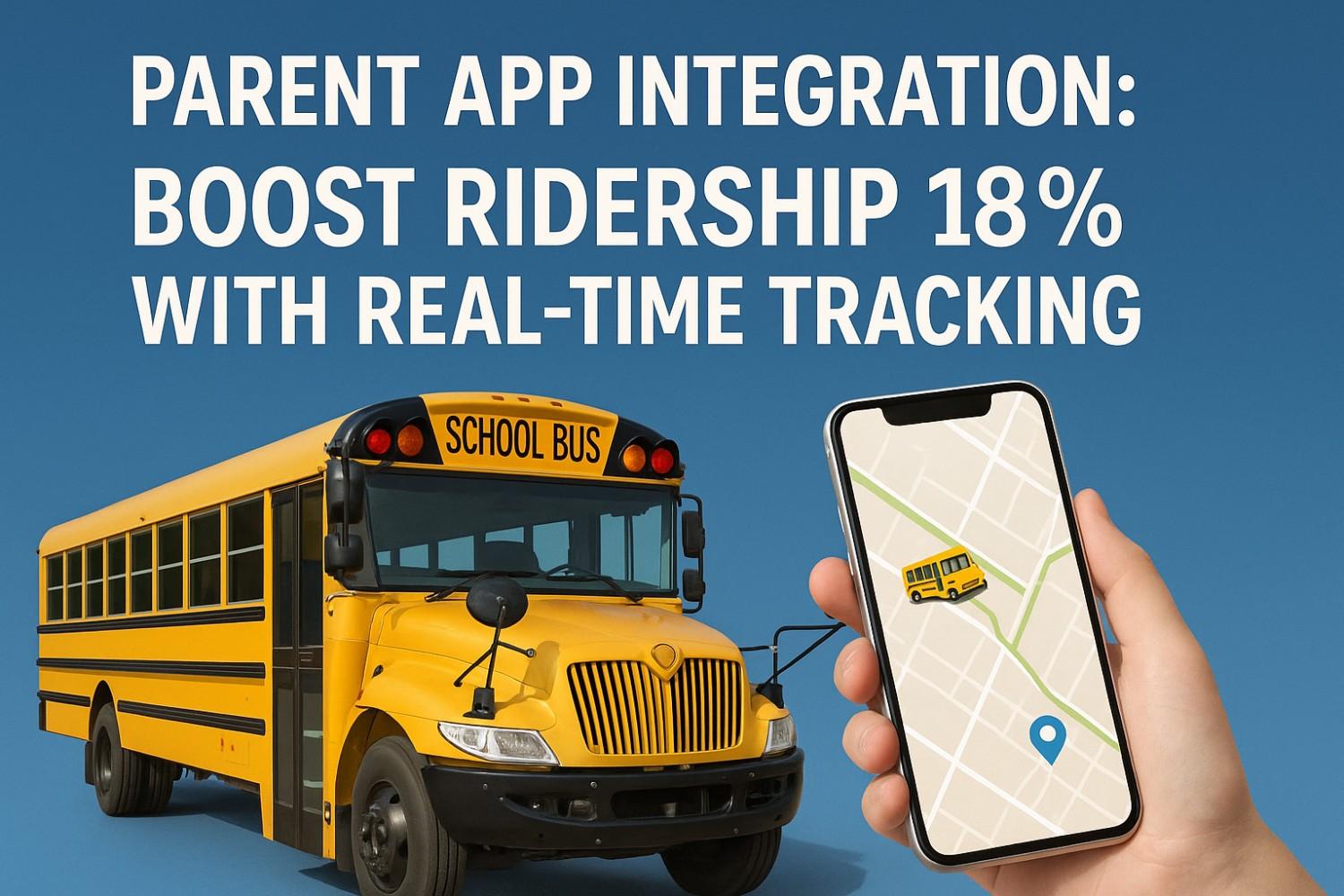In the competitive landscape of school transportation, districts face mounting pressure to deliver safe, efficient services while managing shrinking budgets and increasing regulatory demands. School bus management software has emerged as the cornerstone solution for modern fleet operations, transforming how districts handle maintenance scheduling, ensure fleet compliance, and maximize vehicle uptime. This comprehensive analysis examines how integrated CMMS systems are revolutionizing school transport through data-driven decision making and automated workflows.
The traditional approach of managing school bus fleets through spreadsheets, paper logs, and reactive maintenance strategies is no longer sustainable. With federal regulations tightening and parents demanding real-time visibility into their children's transportation, districts need sophisticated fleet software that can handle the complexity of modern operations. Bus fleet management platforms now serve as the central nervous system for transportation departments, coordinating everything from driver safety protocols to GPS systems integration.
This case study explores how leading school districts have leveraged AI fleet tools and maintenance software to achieve remarkable improvements in operational efficiency and student safety. We'll examine specific implementations where school bus tracking and route optimization have reduced costs by millions while improving on-time performance. The following analysis provides manufacturing professionals with actionable insights into selecting and implementing fleet automation solutions that deliver measurable ROI.
The Business Case for Comprehensive Fleet Software
School districts managing fleets of 50 to 500+ buses face unique operational challenges that generic fleet management solutions cannot address. The specialized requirements of student transportation—from ensuring child check procedures to managing complex bell schedules—demand purpose-built school bus CMMS platforms. These systems must seamlessly integrate maintenance workflows, compliance tracking, and real-time operational data while remaining intuitive for diverse user groups including mechanics, drivers, and administrators.
The financial implications of inadequate fleet management are staggering. Districts operating without integrated maintenance software experience 40% higher emergency repair costs, 25% more vehicle downtime, and significantly increased liability exposure. Beyond the direct costs, manual processes consume thousands of administrative hours annually that could be redirected toward strategic initiatives. Modern fleet automation eliminates these inefficiencies while providing the data transparency required for informed capital planning.
Case Study: Pacific Northwest School District Transformation
Pacific Northwest School District (PNSD) operates 312 buses across diverse terrain, from urban routes to rural mountain passes. Prior to implementing comprehensive bus fleet management software, the district struggled with cascading operational failures. Mechanics spent 30% of their time searching for parts and documentation. Drivers submitted paper inspection reports that often went unprocessed for days. The transportation director had no real-time visibility into fleet status, leading to last-minute route cancellations that infuriated parents and disrupted education.
The breaking point arrived during a state audit that uncovered 147 instances of overdue preventive maintenance and incomplete driver qualification files. Facing potential penalties exceeding $500,000 and negative media attention, PNSD leadership recognized that incremental improvements wouldn't suffice. They needed a complete digital transformation of their fleet operations, starting with the implementation of an integrated school bus CMMS platform.
Implementation Strategy and Stakeholder Buy-In
PNSD's implementation team developed a phased approach that prioritized quick wins while building toward comprehensive integration. Phase one focused on digitizing driver vehicle inspection reports (DVIRs) and establishing real-time defect communication. Within two weeks, drivers were completing inspections on rugged tablets, with critical defects triggering immediate alerts to maintenance supervisors. This single change eliminated the previous 24-48 hour lag in defect reporting.
Phase two introduced predictive maintenance scheduling based on actual mileage and engine hours rather than calendar intervals. The maintenance software automatically generated work orders 500 miles before service deadlines, allowing the shop to batch similar repairs and order parts proactively. Integration with the district's existing GPS systems provided accurate odometer readings without manual entry, eliminating a major source of data errors.
90-Day Implementation Roadmap
Measurable Results and Operational Impact
Within six months of full implementation, PNSD achieved remarkable operational improvements. Unscheduled breakdowns decreased by 71%, saving an estimated $380,000 in emergency repairs and towing costs. The automated maintenance scheduling system improved PM completion rates from 68% to 97%, virtually eliminating compliance risks. Most importantly, the district maintained perfect operational days (zero route cancellations due to mechanical issues) for 147 consecutive school days—a record that generated positive community recognition.
The financial impact extended beyond direct cost savings. Insurance carriers recognized the reduced risk profile, offering a 15% premium reduction worth $127,000 annually. The district qualified for state safety grants totaling $450,000 based on their demonstrated commitment to fleet modernization. Labor efficiency gains allowed the district to handle a 10% increase in routes without adding maintenance staff, effectively saving three FTE positions worth $195,000 in fully loaded costs.
Second CTA SectionAdvanced Features Driving Competitive Advantage
Modern school bus tracking systems offer capabilities far beyond basic GPS location services. Today's platforms integrate multiple data streams to provide comprehensive operational intelligence. Real-time engine diagnostics predict component failures weeks in advance. Driver behavior monitoring identifies coaching opportunities before accidents occur. Route optimization algorithms continuously adjust for traffic patterns, weather conditions, and student address changes. These AI fleet tools transform raw data into actionable insights that improve both safety and efficiency.
Predictive Analytics Engine
Machine learning algorithms analyze historical maintenance data to forecast component failures with 89% accuracy, enabling proactive parts ordering and scheduled repairs during convenient windows.
Integrated Compliance Management
Automated tracking of driver certifications, vehicle inspections, and regulatory requirements with advance notifications ensures 100% audit readiness at all times.
Mobile-First Architecture
Native mobile apps for drivers and mechanics enable real-time data capture at the point of action, eliminating paperwork and ensuring immediate visibility of critical issues.
Parent Communication Portal
Real-time bus tracking for parents reduces anxious phone calls by 82% while automated delay notifications maintain trust during weather or traffic disruptions.
Integration Ecosystem: Maximizing Technology Investments
Successful fleet automation requires seamless integration with existing district systems. Modern CMMS systems must communicate with student information systems for accurate ridership data, financial systems for parts procurement and budget tracking, and human resources platforms for driver qualification management. Open API architectures enable these connections without expensive custom development, preserving flexibility as district needs evolve.
The integration of route optimization with maintenance scheduling represents a particularly powerful synergy. By analyzing vehicle health data alongside route requirements, the system can assign the most reliable buses to the longest routes while scheduling maintenance during natural downtime windows. This intelligent coordination reduces spare bus requirements by 15-20% while improving overall fleet reliability.
Critical Integration Points
Fuel Management Systems: Automatic mileage updates eliminate manual entry errors while identifying vehicles with declining fuel efficiency that may require maintenance attention.
Time and Attendance: Driver hours synchronize with route assignments to ensure compliance with DOT regulations while optimizing overtime management.
Inventory Management: Parts usage automatically updates inventory levels and triggers reorder points, reducing stockouts by 67% while minimizing carrying costs.
Financial Systems: Work order costs flow directly to general ledger accounts, providing real-time visibility into transportation budget performance.
Frequently Asked Questions: How Bus CMMS Drives Efficiency
1. How does Bus CMMS reduce vehicle downtime and improve fleet availability?
Bus CMMS transforms maintenance from reactive to predictive through continuous monitoring of vehicle health indicators. Our AI-powered diagnostics analyze oil quality, brake wear, battery voltage, and dozens of other parameters to schedule maintenance before failures occur. Districts typically see 65-75% reduction in unscheduled breakdowns, increasing fleet availability from an industry average of 82% to over 95%. The system automatically schedules preventive maintenance during school breaks and weekends, ensuring maximum vehicle availability during critical operating hours. Real-time parts inventory integration means technicians never start a job without necessary components, reducing repair time by 40%.
2. What efficiency gains can we expect in our maintenance operations?
Bus CMMS eliminates 3-4 hours of daily paperwork per technician through digital work orders and automated parts tracking. Mobile technology allows mechanics to receive assignments, document repairs, and order parts directly from their smartphones. The system's intelligent scheduling groups similar repairs together, reducing setup time by 30%. Automated purchase order generation and vendor management cut procurement time by 60%. Most importantly, our predictive maintenance algorithms reduce the frequency of major repairs by catching issues early when they're quick and inexpensive to fix. Districts report average labor hour savings of 25-35% while improving quality metrics.
3. How quickly will Bus CMMS improve our regulatory compliance position?
Within 45 days of implementation, Bus CMMS provides complete visibility into all compliance requirements with automated alerts for upcoming deadlines. Digital DVIR completion ensures 100% inspection compliance with photographic documentation and timestamp verification. The system maintains all required FMCSA records for mandated retention periods and generates audit reports in minutes rather than weeks. Our compliance dashboard shows real-time status across all vehicles and drivers, eliminating surprise violations. Districts using Bus CMMS report zero compliance-related fines after implementation, compared to industry averages of $50,000-100,000 annually in penalties.
4. Can Bus CMMS help optimize our routing and reduce transportation costs?
Absolutely. Bus CMMS's route optimization engine considers vehicle capacity, maintenance schedules, driver availability, and real-time traffic data to create the most efficient routes possible. The system automatically adjusts for student address changes and can simulate different bell time scenarios to identify cost-saving opportunities. Districts typically reduce total route miles by 12-18%, saving $2,500-4,000 per bus annually in fuel and wear. The platform's GPS integration provides actual vs. planned route analysis, identifying opportunities for further optimization. Multi-tier routing algorithms ensure special needs students receive appropriate accommodations while maximizing efficiency.
5. What's the learning curve for drivers and staff, and how does it impact efficiency?
Bus CMMS prioritizes user experience with intuitive interfaces requiring minimal training. Drivers master the mobile DVIR app in under 30 minutes, actually saving time compared to paper forms. Mechanics adapt to digital work orders within 2-3 days, with productivity improvements visible immediately. The system includes role-based dashboards, so users only see relevant information without overwhelming complexity. Built-in training videos and contextual help reduce support tickets by 80%. Most importantly, the efficiency gains are immediate—drivers complete inspections 50% faster, dispatchers handle issues in real-time rather than next-day, and managers access reports instantly instead of waiting for manual compilation.
Return on Investment: Beyond the Numbers
While the financial benefits of comprehensive fleet software are substantial and measurable, the true value extends far beyond cost savings. Districts implementing Bus CMMS report fundamental improvements in organizational culture, with transportation departments transforming from reactive cost centers to proactive strategic partners. The availability of real-time data empowers better decision-making at all levels, from mechanics prioritizing daily work to superintendents planning long-term capital investments.
The ripple effects of improved transportation reliability impact the entire educational ecosystem. When buses run on time, student attendance improves. When parents can track buses in real-time, anxiety decreases and trust in the district increases. When maintenance is predictive rather than reactive, drivers feel safer and more valued. These qualitative improvements, while difficult to quantify, often represent the most significant long-term value of fleet automation investments.
Comprehensive Value Analysis
Quantifiable Financial Benefits
- Maintenance cost reduction: 35-45% annually
- Fuel savings through optimization: 15-20% annually
- Insurance premium reductions: 10-15% annually
- Overtime expense decrease: 25-30% annually
- Parts inventory optimization: 20-25% reduction
Strategic Organizational Benefits
- Improved student attendance through reliable transportation
- Enhanced district reputation and parent satisfaction
- Better capital planning through predictive analytics
- Reduced legal liability and litigation risk
- Attraction and retention of quality drivers and mechanics
Implementation Success Factors and Best Practices
Successful school bus CMMS implementation requires more than selecting the right technology platform. Districts must address organizational readiness, change management, and process optimization to realize full benefits. The most successful implementations share common characteristics: strong executive sponsorship, clear communication of benefits to all stakeholders, and a phased approach that demonstrates early wins while building toward comprehensive transformation.
Data quality emerges as a critical success factor often overlooked in initial planning. Legacy systems frequently contain incomplete or inaccurate information about vehicle histories, parts inventories, and maintenance schedules. Investing time in data cleanup and validation during implementation pays dividends through improved system accuracy and user confidence. Districts that rush this phase often struggle with adoption as users lose faith in system recommendations based on poor underlying data.
Seven Pillars of Successful Implementation
1. Executive Championship: Visible support from district leadership ensures adequate resources and overcomes organizational resistance to change.
2. Stakeholder Engagement: Include drivers, mechanics, parents, and students in planning to address concerns and build enthusiasm.
3. Phased Deployment: Start with high-impact, low-complexity features to demonstrate value before tackling complex integrations.
4. Data Governance: Establish clear ownership and quality standards for all system data to ensure reliable outputs.
5. Training Investment: Allocate sufficient time and resources for comprehensive training tailored to each user role.
6. Change Management: Communicate benefits clearly and celebrate early wins to build momentum for transformation.
7. Continuous Improvement: Establish feedback loops and KPIs to measure success and identify optimization opportunities.
Future-Proofing Your Fleet Investment
The rapid evolution of transportation technology requires fleet software platforms that can adapt to emerging trends and requirements. Electric school buses introduce new maintenance parameters and charging logistics that traditional CMMS systems cannot handle. Autonomous vehicle features, while still developing, will require sophisticated integration between fleet management and vehicle control systems. Environmental regulations continue to tighten, demanding more detailed emissions tracking and reporting capabilities.
Leading fleet automation platforms anticipate these changes through modular architectures and regular feature updates. Cloud-based deployment ensures districts always operate on current versions without disruptive upgrades. Open APIs enable integration with emerging technologies as they mature. Most importantly, strong vendor partnerships provide access to industry best practices and peer learning opportunities that accelerate innovation adoption.
The districts achieving greatest success view their fleet software investment as a strategic platform rather than a point solution. By selecting extensible systems with strong vendor support, they position themselves to leverage future innovations while maximizing current operational efficiency. This forward-thinking approach ensures today's investment continues delivering value as the transportation landscape evolves.
Conclusion: The Imperative for Action
The evidence is overwhelming: comprehensive school bus management software delivers transformative benefits across all aspects of fleet operations. From dramatic reductions in maintenance costs to significant improvements in safety and compliance, the ROI case is compelling. Yet many districts continue operating with outdated systems, accepting inefficiency as inevitable and risking student safety through reactive management approaches.
The question facing transportation professionals is not whether to modernize their fleet management capabilities, but how quickly they can implement solutions that address today's challenges while preparing for tomorrow's opportunities. Every day of delay represents lost savings, increased risk, and missed opportunities to better serve students and communities. The technology exists, the benefits are proven, and the implementation path is clear.
Industry leaders recognize that fleet automation represents table stakes for modern school transportation. Districts that fail to adopt comprehensive management software will find themselves increasingly unable to meet stakeholder expectations, comply with evolving regulations, or compete for scarce resources. Conversely, those that embrace digital transformation position themselves as innovative leaders capable of delivering safe, efficient, and reliable transportation services that support educational excellence.
Start Your Fleet Transformation Journey Today
Join hundreds of progressive school districts that have revolutionized their operations with Bus CMMS. Our proven platform delivers immediate efficiency gains while positioning your fleet for long-term success.
Getting Started Book a Demo